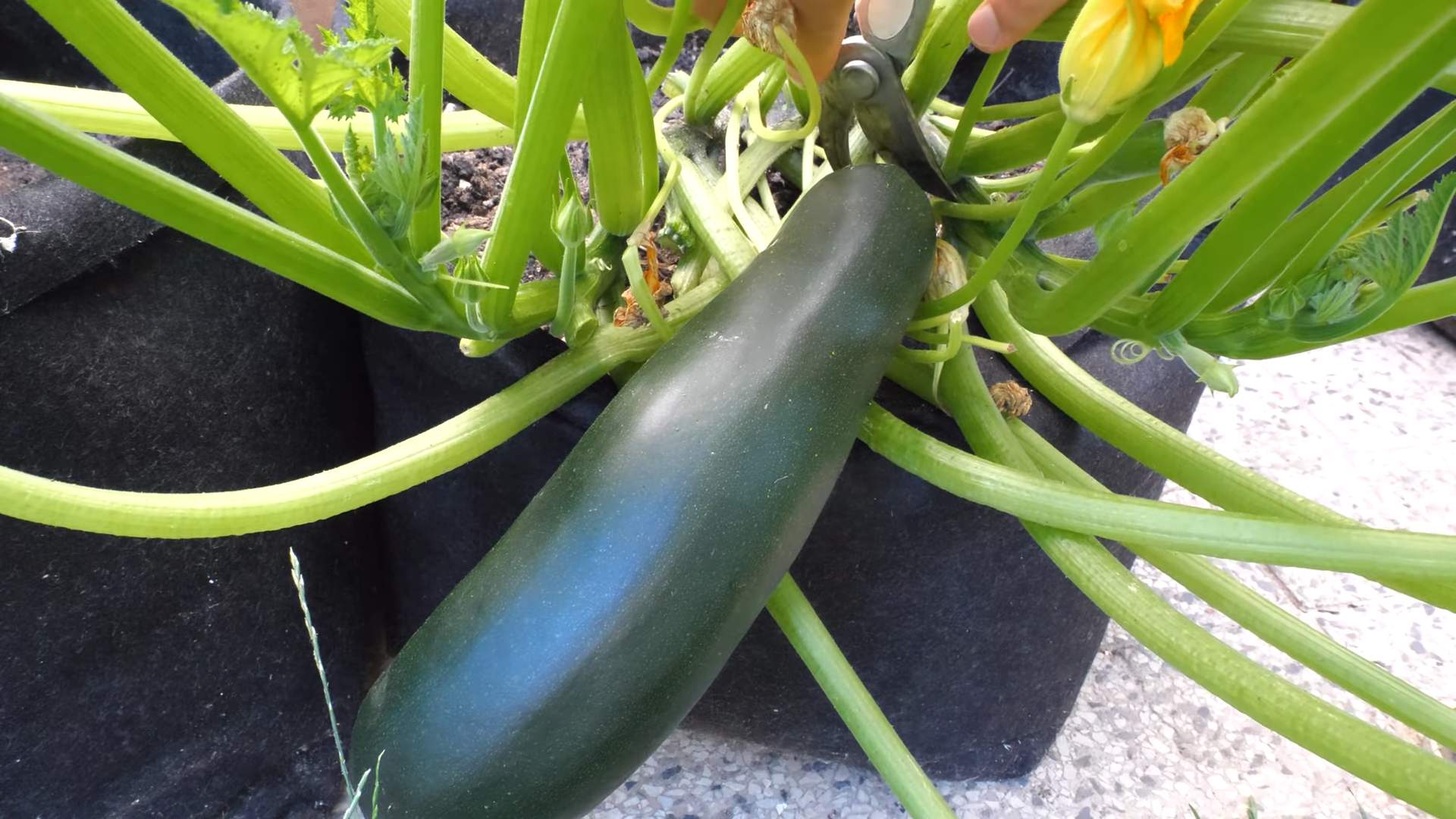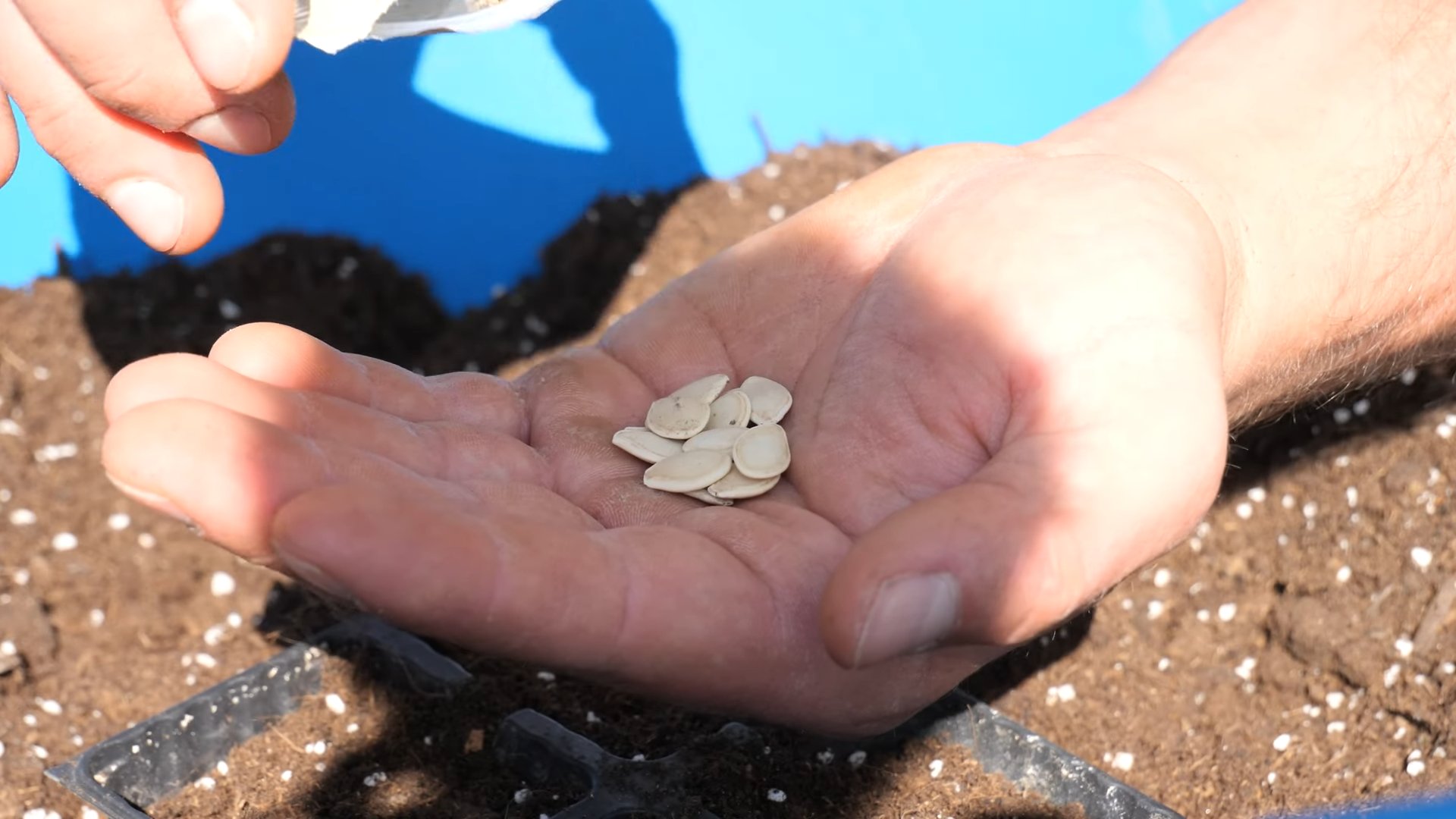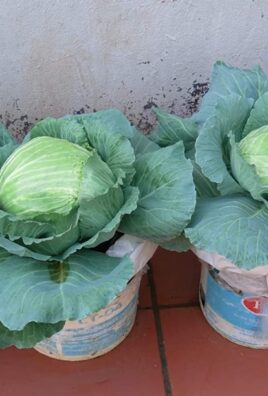Backyard Zucchini Growing Tips: Ever dream of stepping into your backyard and harvesting a bounty of fresh, vibrant zucchini? I know I have! There’s something incredibly satisfying about growing your own food, and zucchini, with its prolific nature, is the perfect place to start. But let’s be honest, sometimes those zucchini plants seem to have a mind of their own, don’t they?
For centuries, zucchini, a relative newcomer to the culinary scene compared to other vegetables, has been a staple in Mediterranean cuisine. Its versatility and ease of cultivation quickly made it a favorite worldwide. But even with its relatively recent introduction, mastering backyard zucchini growing tips can be the difference between a few sad fruits and a summer overflowing with zucchini bread, grilled zucchini, and zucchini noodles galore!
That’s where this guide comes in! I’m going to share some simple, yet effective, DIY tricks and hacks that will help you maximize your zucchini harvest. Whether you’re a seasoned gardener or just starting out, these tips will empower you to overcome common challenges and enjoy the fruits (or rather, vegetables!) of your labor. Because let’s face it, nobody wants to be overwhelmed with pest problems or struggling with poor yields. Let’s get those zucchini plants thriving!

Backyard Zucchini Growing Tips: From Seed to Table!
Okay, zucchini lovers, let’s get down to business! I’m going to share all my secrets for growing the most amazing, abundant zucchini crop right in your own backyard. Forget those tiny, sad zucchinis at the grocery store – we’re talking about monster-sized, delicious veggies that you’ll be giving away to all your neighbors!
Choosing the Right Zucchini Variety
Before we even think about planting, it’s crucial to pick the right zucchini variety for your needs and climate. There are tons of options, each with its own unique characteristics.
* Black Beauty: This is a classic, reliable choice. It produces dark green, almost black, zucchinis that are perfect for grilling, baking, or shredding. It’s also a pretty vigorous grower.
* Costata Romanesco: If you’re looking for something a little different, this Italian heirloom variety is a winner. It has beautiful ribbed fruits with a slightly nutty flavor.
* Golden Zucchini: For a pop of color, try golden zucchini. They have a milder flavor than green varieties and are great in salads or stir-fries.
* Round Zucchini (Eight Ball, One Ball): These are super cute and perfect for stuffing! They’re also great for smaller gardens since the plants tend to be more compact.
* Patio Zucchini: As the name suggests, this variety is ideal for container gardening. It’s a bush type, so it doesn’t sprawl as much as other varieties.
Tip: Check your local nursery or seed catalog for varieties that are well-suited to your specific growing zone.
Preparing Your Garden Bed
Zucchini plants are heavy feeders, so preparing your garden bed properly is essential for a successful harvest.
* Sunlight: Zucchini needs at least 6-8 hours of direct sunlight per day. Choose a spot in your yard that gets plenty of sunshine.
* Soil: Zucchini prefers well-drained, fertile soil with a pH between 6.0 and 7.5.
* Compost: Amend your soil with plenty of compost or well-rotted manure. This will provide essential nutrients and improve drainage. I usually add a good 4-6 inches of compost to my beds.
* Fertilizer: You can also add a slow-release fertilizer to the soil before planting. Look for a fertilizer that’s high in phosphorus, which promotes root growth.
* Spacing: Zucchini plants need plenty of space to grow. Space them at least 2-3 feet apart. If you’re growing in rows, space the rows 3-4 feet apart.
Starting Zucchini Seeds Indoors (Optional)
While you can direct sow zucchini seeds in the garden, starting them indoors gives them a head start, especially in cooler climates.
1. Timing: Start your seeds about 3-4 weeks before the last expected frost.
2. Containers: Use peat pots or biodegradable pots to avoid disturbing the roots when transplanting.
3. Soil: Fill the pots with a seed-starting mix.
4. Planting: Plant 1-2 seeds per pot, about 1 inch deep.
5. Watering: Water gently to keep the soil moist but not soggy.
6. Light: Place the pots in a warm, sunny location or under grow lights.
7. Hardening Off: Before transplanting, gradually acclimate the seedlings to outdoor conditions by placing them outside for a few hours each day, increasing the time each day for about a week.
Planting Zucchini Seeds or Seedlings
Once the danger of frost has passed and the soil has warmed up, it’s time to plant your zucchini!
1. Direct Sowing: If you’re direct sowing, plant the seeds about 1 inch deep and 2-3 feet apart. Water well.
2. Transplanting Seedlings: Gently remove the seedlings from their pots and plant them in the prepared garden bed, spacing them 2-3 feet apart. Water well.
3. Mulching: Mulch around the plants with straw or wood chips to help retain moisture and suppress weeds.
Caring for Your Zucchini Plants
Zucchini plants are relatively easy to care for, but there are a few things you need to keep in mind.
* Watering: Water deeply and regularly, especially during hot, dry weather. Aim to water at the base of the plant to avoid wetting the leaves, which can lead to fungal diseases. I usually water deeply 2-3 times a week, depending on the weather.
* Fertilizing: Fertilize your zucchini plants every 2-3 weeks with a balanced fertilizer. You can also use a liquid seaweed fertilizer for an extra boost.
* Weeding: Keep the garden bed free of weeds, which can compete with the zucchini plants for nutrients and water.
* Pest Control: Keep an eye out for common zucchini pests like squash bugs, squash vine borers, and aphids. I’ll cover pest control in more detail later.
* Pollination: Zucchini plants have separate male and female flowers. The female flowers need to be pollinated in order to produce fruit. If you’re not seeing any fruit develop, you may need to hand-pollinate the flowers.
Hand-Pollinating Zucchini Flowers
Sometimes, especially early in the season or when there aren’t many pollinators around, you might need to lend a hand with pollination. It’s actually pretty easy!
1. Identify Male and Female Flowers: Male flowers have a long, thin stem, while female flowers have a small zucchini-like fruit at the base.
2. Timing: The best time to hand-pollinate is in the morning, when the flowers are fully open.
3. Collect Pollen: Gently remove a male flower from the plant. Peel back the petals to expose the pollen-covered stamen.
4. Transfer Pollen: Gently rub the stamen of the male flower onto the stigma (the sticky part) of the female flower.
5. Repeat: Repeat this process for several female flowers.
Dealing with Common Zucchini Pests and Diseases
Unfortunately, zucchini plants are susceptible to a few pests and diseases. Here’s how to deal with them:
* Squash Bugs: These pesky bugs suck the sap from the leaves, causing them to wilt and die. Handpick them off the plants or use insecticidal soap. I’ve found that covering young plants with row covers can help prevent squash bug infestations.
* Squash Vine Borers: These are the bane of every zucchini grower’s existence! The larvae of these moths bore into the stems of the plants, causing them to wilt and die. Look for small holes in the stems and sawdust-like frass. If you find them early enough, you can try to remove the larvae with a knife or wire. You can also inject Bacillus thuringiensis (Bt) into the stems to kill the larvae. Prevention is key – use row covers to protect the plants from the moths.
* Aphids: These tiny insects suck the sap from the leaves, causing them to curl and distort. Spray them off with a strong stream of water or use insecticidal soap.
* Powdery Mildew: This fungal disease causes a white, powdery coating on the leaves. Improve air circulation by spacing the plants properly and pruning away crowded leaves. You can also spray the plants with a fungicide.
* Blossom End Rot: This is caused by a calcium deficiency and results in a dark, sunken spot on the blossom end of the zucchini. Make sure your soil is rich in calcium and water the plants regularly.
Harvesting Your Zucchini
The best part! Zucchini grows quickly, so you’ll need to harvest it regularly.
1. Timing: Harvest zucchini when it’s young and tender, about 6-8 inches long. Overripe zucchini can be tough and seedy.
2. Cutting: Use a sharp knife to cut the zucchini from the plant, leaving a short stem attached.
3. Regular Harvesting: The more you harvest, the more the plant will produce!
Creative Ways to Use Your Zucchini Bounty
Okay, you’ve got a mountain of zucchini. Now what? Here are some of my favorite ways to use it:
* Grilled Zucchini: Slice zucchini lengthwise, brush with olive oil, and grill until tender.
* Zucchini Bread: A classic! There are tons of zucchini bread recipes online.
* Zucchini Noodles (Zoodles): Use a spiralizer to turn zucchini into noodles. Serve with your favorite sauce.
* Stuffed Zucchini: Hollow out zucchini and fill with a mixture of ground meat, rice, and vegetables.
* Zucchini Fritters: Shred zucchini and mix with flour, eggs, and seasonings. Fry until golden brown.
* Zucchini Soup:

Conclusion
So, there you have it! Transforming your backyard into a zucchini haven is not only achievable but incredibly rewarding. We’ve explored the ins and outs of successful zucchini cultivation, from selecting the perfect spot and preparing the soil to warding off pests and diseases. But the real magic lies in the DIY tricks we’ve uncovered – the secrets that elevate your zucchini game from ordinary to extraordinary.
Why is this a must-try? Because growing your own zucchini, especially with these enhanced methods, offers a cascade of benefits. You’re not just getting fresh, delicious vegetables; you’re gaining control over the quality and source of your food. You’re reducing your carbon footprint by eliminating transportation costs. And, perhaps most importantly, you’re connecting with nature in a tangible and fulfilling way. Plus, let’s be honest, there’s a certain pride that comes with serving a dish made with zucchini you nurtured from a tiny seed.
But the journey doesn’t end here. Feel free to experiment! Try different companion plants to see what works best in your specific microclimate. Consider succession planting to extend your harvest season. Explore various methods of pest control, from organic sprays to physical barriers. The possibilities are endless.
And speaking of possibilities, don’t limit yourself to just green zucchini! There are yellow varieties, round varieties, and even striped varieties, each with its own unique flavor and texture. Branch out and discover the world of zucchini beyond the standard grocery store offerings.
We’ve covered a lot of ground, but the most important step is the first one: planting that seed. Don’t be intimidated if you’re a beginner. Zucchini is a relatively forgiving plant, and even if you make a few mistakes along the way, you’re likely to still reap a bountiful harvest. The key is to learn from your experiences and adapt your approach as needed.
The DIY aspect of this guide is crucial. It empowers you to take control of your zucchini growing process. Instead of relying on expensive store-bought solutions, you can create your own fertilizers, pest repellents, and watering systems using readily available materials. This not only saves you money but also reduces your reliance on harmful chemicals.
Remember, successful backyard zucchini growing is a journey, not a destination. There will be challenges along the way, but the rewards are well worth the effort. So, grab your gardening gloves, prepare your soil, and get ready to experience the joy of harvesting your own delicious zucchini.
We are confident that these backyard zucchini growing tips will help you achieve a thriving garden. Now, we want to hear from you! Try these techniques, adapt them to your own unique circumstances, and share your experiences with us. What worked well? What challenges did you face? What innovative solutions did you come up with? Your feedback will not only help us improve this guide but also inspire other gardeners to embark on their own zucchini-growing adventures. Share your photos, stories, and tips in the comments section below. Let’s create a community of zucchini enthusiasts!
FAQ
What is the best time to plant zucchini in my backyard?
The ideal time to plant zucchini is after the last frost when the soil has warmed to at least 60°F (15°C). Zucchini is sensitive to cold temperatures, so planting too early can stunt its growth or even kill the seedlings. In most regions, this typically falls between late spring and early summer. You can also start seeds indoors 3-4 weeks before the last expected frost and transplant them outdoors once the weather is suitable. Check your local weather forecasts and planting calendars for specific recommendations for your area.
How much sunlight does zucchini need to grow well?
Zucchini plants require at least 6-8 hours of direct sunlight per day to thrive. Insufficient sunlight can lead to weak growth, reduced fruit production, and increased susceptibility to diseases. Choose a location in your backyard that receives full sun throughout the day. If you live in a particularly hot climate, some afternoon shade may be beneficial to prevent the plants from overheating.
What kind of soil is best for growing zucchini?
Zucchini prefers well-drained, fertile soil that is rich in organic matter. The ideal soil pH is between 6.0 and 7.5. Before planting, amend your soil with compost, aged manure, or other organic materials to improve its drainage, fertility, and water-holding capacity. Avoid heavy clay soils, as they can become waterlogged and inhibit root growth. If you have clay soil, consider growing zucchini in raised beds or containers.
How often should I water my zucchini plants?
Zucchini plants need consistent moisture, especially during hot, dry weather. Water deeply and regularly, aiming to keep the soil consistently moist but not waterlogged. A good rule of thumb is to water when the top inch of soil feels dry to the touch. Avoid overhead watering, as this can promote fungal diseases. Instead, water at the base of the plants, using a soaker hose or drip irrigation system. Mulching around the plants can also help to retain moisture and suppress weeds.
What are some common pests and diseases that affect zucchini plants?
Zucchini plants are susceptible to a variety of pests and diseases, including squash bugs, squash vine borers, aphids, powdery mildew, and blossom end rot. Regularly inspect your plants for signs of infestation or disease. Use organic pest control methods, such as insecticidal soap, neem oil, or handpicking, to manage pests. To prevent diseases, ensure good air circulation around the plants, avoid overhead watering, and remove any infected leaves or fruit promptly. Blossom end rot is often caused by calcium deficiency or inconsistent watering, so ensure your soil is properly amended and water regularly.
How do I harvest zucchini?
Zucchini is typically ready to harvest when it is 6-8 inches long. Use a sharp knife or pruning shears to cut the zucchini from the plant, leaving a short stem attached. Harvest regularly to encourage continued fruit production. Overripe zucchini can become tough and seedy, so it’s best to harvest them when they are young and tender.
Can I grow zucchini in containers?
Yes, zucchini can be grown in containers, but you’ll need to choose a large container that is at least 24 inches in diameter and 12 inches deep. Use a high-quality potting mix that is well-draining and rich in organic matter. Be sure to provide adequate sunlight, water, and fertilizer. Container-grown zucchini may require more frequent watering and fertilization than plants grown in the ground.
What are some good companion plants for zucchini?
Companion planting can help to improve the health and productivity of your zucchini plants. Some good companion plants for zucchini include:
* Marigolds: Repel pests such as squash bugs and nematodes.
* Nasturtiums: Attract aphids away from zucchini plants.
* Radishes: Deter squash vine borers.
* Beans: Fix nitrogen in the soil, which benefits zucchini plants.
* Oregano: Attracts beneficial insects and repels pests.
How can I prevent blossom end rot in my zucchini?
Blossom end rot is a common problem in zucchini, characterized by a dark, sunken spot on the blossom end of the fruit. It is typically caused by calcium deficiency or inconsistent watering. To prevent blossom end rot:
* Ensure your soil is properly amended with calcium-rich materials, such as bone meal or crushed eggshells.
* Water regularly and deeply, especially during hot, dry weather.
* Avoid over-fertilizing with nitrogen, as this can interfere with calcium uptake.
* Mulch around the plants to help retain moisture and prevent soil from drying out too quickly.
How do I deal with powdery mildew on my zucchini plants?
Powdery mildew is a fungal disease that appears as a white, powdery coating on the leaves of zucchini plants. To prevent and treat powdery mildew:
* Ensure good air circulation around the plants by spacing them properly and pruning away any crowded foliage.
* Avoid overhead watering, as this can create a humid environment that favors fungal growth.
* Apply a fungicide specifically formulated for powdery mildew, following the manufacturer’s instructions.
* Remove and destroy any infected leaves promptly.
* Consider using resistant zucchini varieties.





Leave a Comment